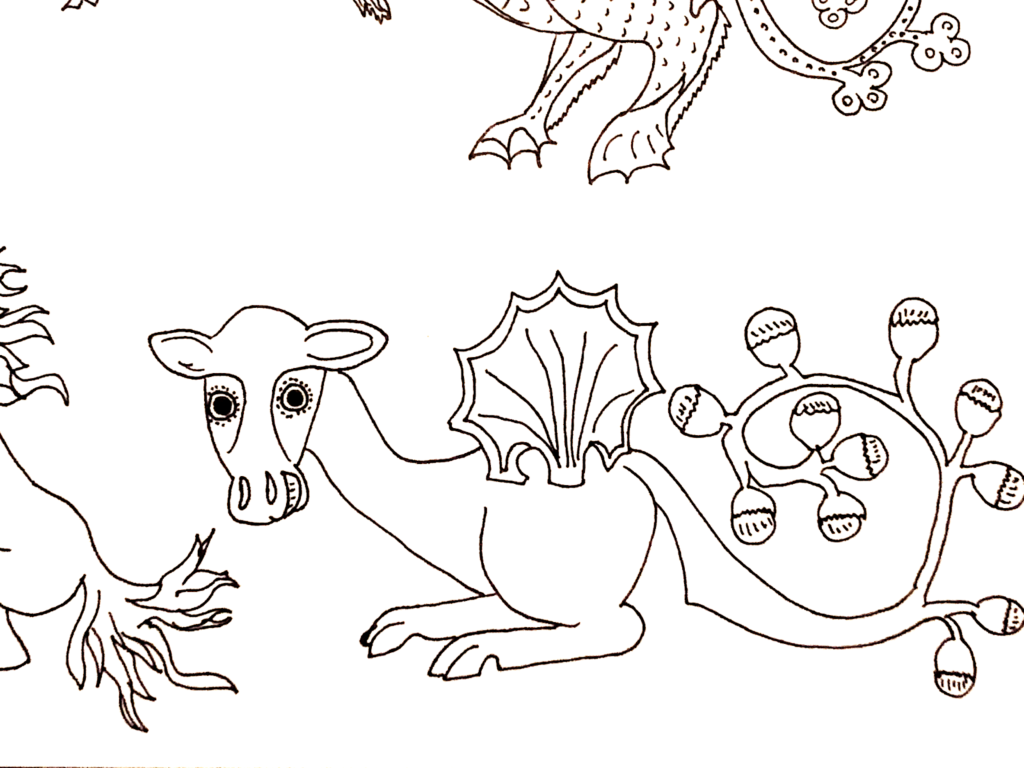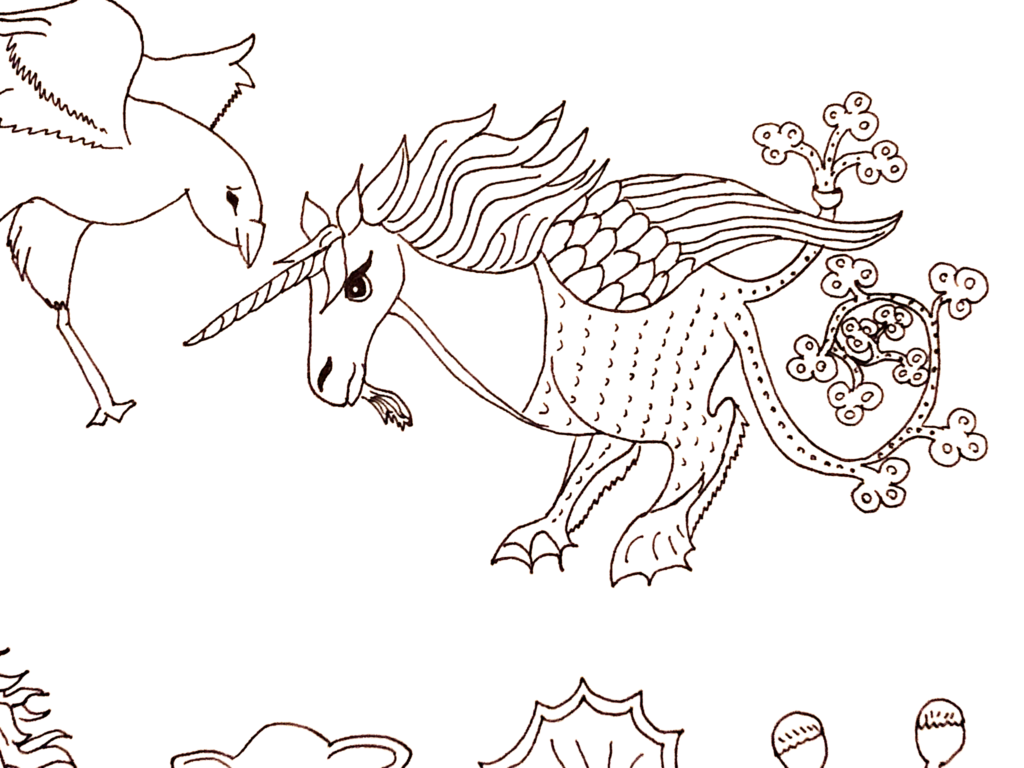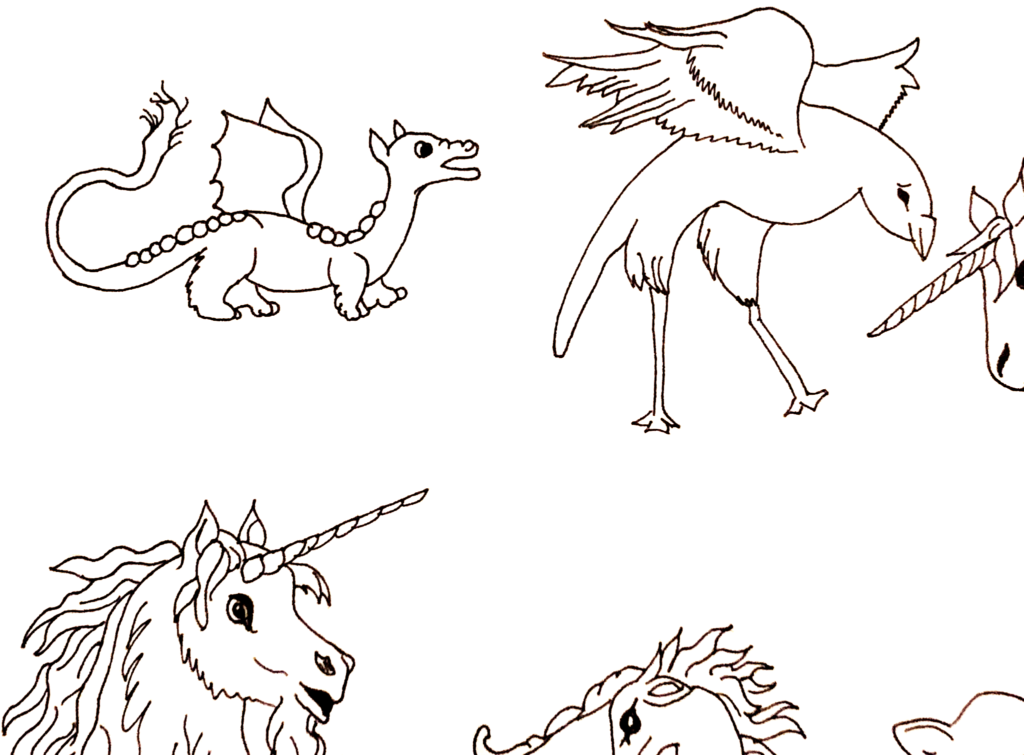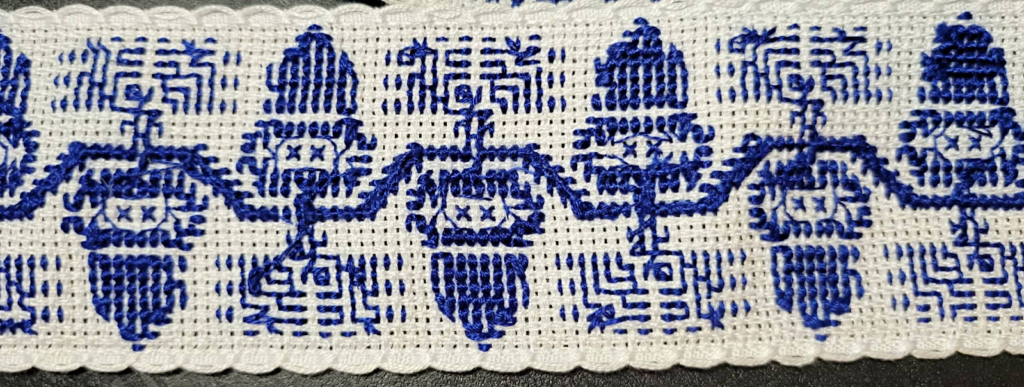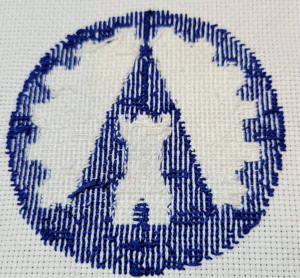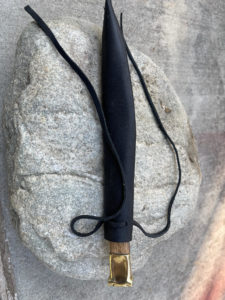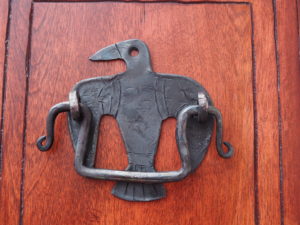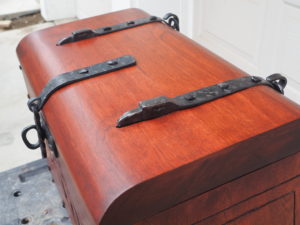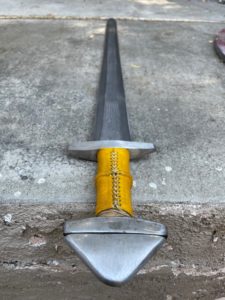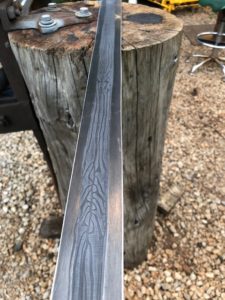Dreiburgen Summer Arts 2021
Competition Entries
(Please Click on the Thumbnails for a Larger View)
Baronial Cat Skjoldehamn Hood
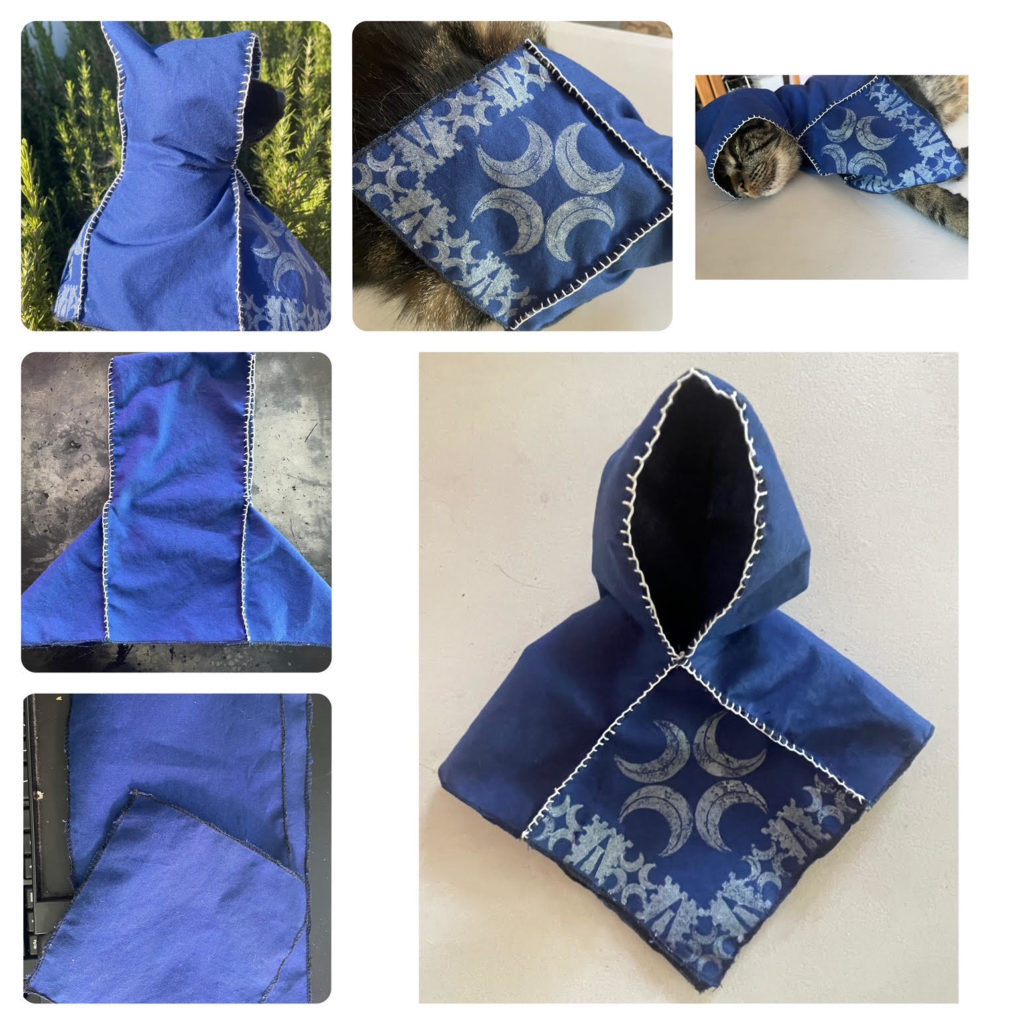
Materials: blue cotton cut with all edges surged with black thread. Pieces were then stitched together with white crochet thread in a blanket stitch. Front and back panels were stamped with silver metallic fabric paint using a combination of 1” trim stamps and a 3” center stamp that were modeled and 3D printed from PLA.
Drolleries from Medieval Illuminated Manuscripts
By Valerie Worley

(Please Click on the Thumbnails Below for a Larger View)
My entry is a page of drawings of drolleries from Medieval Illuminated Manuscripts. I am learning to make award scrolls during Scribal Nights in Caid. I have been working on creating drolleries, both ones replicated directly from manuscripts as well as those inspired by the manuscripts. A drollery is a small decorative image that can be found in the margins of an illuminated manuscript. One main inspiration for these is the Luttrell Psalter. The Luttrell Psalter is an illuminated psalter manuscript that was commissioned by Sir Geoffrey Luttrell circa 1320 – 1345 in England. The psalter was created with the work of at least 5 artists, and the drolleries vary in style. The drolleries tell a story. Some of them depict life during the time period, while others are purely fantasy. All but one of my drolleries are along a fantastical theme.
To create these, I drew rough sketches of each one individually. Once I was satisfied with the sketch, I then created a cleaner and more detailed sketch based on the rough sketches. I then copied the drawings onto the paper. Once those drawings were cleaned up and in a finished state, then I inked each one of them. I wanted to create these for use for scroll ideas and layouts when creating award scrolls.
 Loading...
Loading...
Dreiburgen Populace Badge Cross-Stitch
By Mistress Lynnette de Sandoval del Valle de los Unicornios
 Loading...
Loading...
Caid Populace Badge Cross-Stitch
By Mistress Lynnette de Sandoval del Valle de los Unicornios
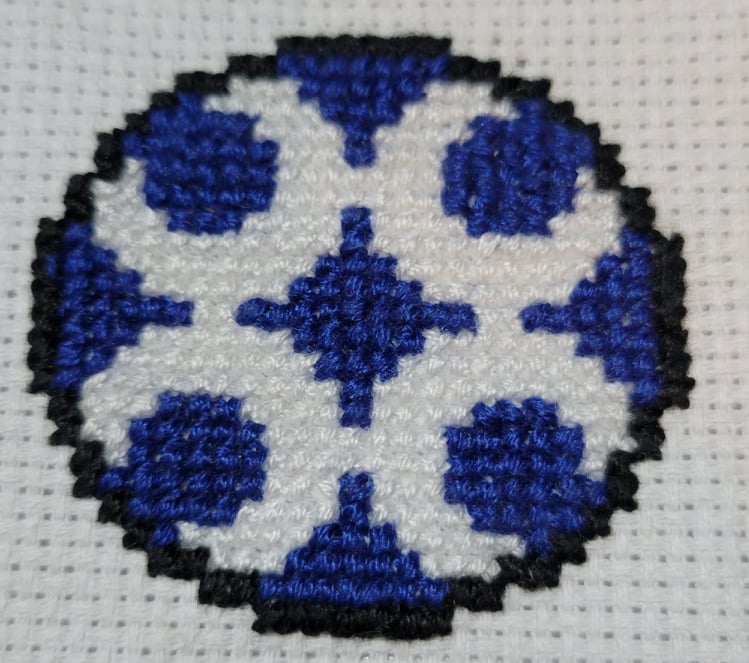
 Loading...
Loading...
Rostiboli Gioioso for 1
Lady Rudaba al-Nahdiya
Documentation:
It has recently come to my attention that during the 15th Century, Germany had not yet been formed, and those lands were under the Holy Roman Empire. Classroom jokes aside, that loosely allied group of princedoms was composed largely of Italy, Burgundy, and Bohemia. According to Master Gregory Blount, there was actually a letter that a German woman wrote while in Italy about dance. As dance was largely for social cohesion, Italian dances would have been done all over the Holy Roman Empire.
I have been working on getting copyright approval for my dance music, and have found that for many dance videos there is great difficulty in doing so. Thus while it is easy to learn from them, it is usually better to seek out musicians and ask them. However, those musicians also often do not understand the pieces they are playing, so end up with either so much ornamentation that it is hard to dance to, or straight up don’t play at the right speed or for the right number of repeats. Fortunately, Anonima Frottolisti is an amazing band from Italy and has granted me permission to use their beautiful recording of 15th Century Italian Rostiboli Gioioso.
While I cannot state when I first learnt Rostiboli Gioioso because it is so commonly done in the SCA, my solo dances only arose due to the covid lockdown, so I only started doing them after March 2020. This specific video was recorded on February 7, 2021.
Rostiboli Gioioso starts with a bassedanza section, then a saltarelli section, and finally a movimenti section. As a solo performer, I did both parts in the bassedanza section, leading to natural repeats. The section of 16 saltarelli is done at the same time by both, so I just did it like usual. Movimenti are movements that are not described and may have been improvisatory, hence my raising of arms. Usually Rostiboli Gioioso is danced twice, with the person on the left (aka the lord) going away first on the first time through. The person on the right (aka the lady) goes away first on the second time through. Ones gender does not need to correspond to the dance role taken on, and many ladies in the SCA dance as lords because of their higher level of experience.
Additional links: Holy Roman Empire - https://www.britannica.com/place/Holy-Roman-Empire Rostiboli Gioioso Instructions - http://www.pbm.com/~lindahl/ del/sections/15th_c_italian_ dance18.html Anonima Frottolisti Music - https://www.youtube.com/watch? v=_B-cWD5nSz4&list=OLAK5uy_ kkKsQOnj6XpJdAHNSbD2IFUhANDA_ 9TIo&index=19
Dance Ad for Dreiburgen Yule
Lady Rudaba al-Nahdiya

Documentation:
This piece is a filk to a period dance tune. There was, in the 15th Century, a French Style dance choreographed by an Italian Courtier. The dance has three step sequences, corresponding to P, A, and B in the text.
The piece starts with 12 (3×4) Pive, hence indicated as P. There is a little up-arrow on that P to represent the slight rise and fall of pive as done by the general public. The Pive are used to promenade around, corresponding to the Call to Journey in the first line. The line is also partly alliterative, with 4 Cs, although only 3 of them make an actual “k” sound. This fits well with the fact that Drei- in Dreiburgen means Three. In addition, the Cs are drawn as crescents due to the 4 crescents argent on azure that signify CAID. The blue background of the moons of Caid is represented in the text color. The word carol once meant dancing around in a circle, which is what the class will start out with, through Bransle Official. By fortunate coincidence, the tune of that dance was later written into a Ding Dong Merrily on High.
The second line has a different style of A, with more of a strike-through effect. This is because the line speaks of Danse de Cleves, a bassedance that is more stately and straight. That section of the dance is also rather stately itself, being two singles, a double, and three singles. The image of flowers and hearts in the text serves as a reflection of the dance’s common name of Hearts and Flowers. It was inverted mostly for scansion, but also because Flowers is verse 2 and Hearts is verse 4 in the dance itself. Most of the text is colored brown to symbolize nature, both in earth and twigs/trees. There is color-coordination used to indicate parallel phrase structure. and I find it neat that although I had chosen purple for the flowers, Cleves is largely known in European history for Anne of Cleves, German Queen consort to King Henry VIII. At least in Chinese culture, purple is a Queenly color, with Gold being for Kings. There is also another heraldic influence from the fact that gules and sable next to each other was common in German arms. I had initially used it to highlight the recurrence of burgs, but decided to use it for “German” as well.
In the last line, I copied the angling effect from P in the first for B as that sequence has three Pive. The line was broken up intentionally to show the internal rhyme, and then connected by orange squigglies to make it super obvious. The line is green because Christmas.
Additional links: 15th Century Dances, including music/steps for Amoroso - http://www.pbm.com/~lindahl/del/sections/15th_c_italian_ dance.html Carol - https://www.britannica.com/ art/carole Official Bransle - http://www.pbm.com/~lindahl/ dance/Official_Bransle.html Danse de Cleves - https://www.youtube.com/watch? v=_QkmA7kpRS8 German heraldry - https://www.facebook.com/ notes/sca-heraldry-chat/ regional-exceptions-to-the- rule-of-tincture-vol-01/ 10150677670804203
Tleco Tleco
Lady Rudaba al-Nahdiya
Documentation:
Because I too can lightbox! This is a praise acrostic for my friend Tenochcacuicatl Delmar, with his name on it. This Teuctli, or lord, was Ansteorra’s Kingdom bard at the time. The Delmar part is self-evident, however the image to the left is actually the Nahuatl representation of his first name. When I attended my friend’s class on Aztec language, he explained his name and showed us the symbol for his name. It was rather nerve-wracking at first, but I think it came out quite prettily. While there is no specific calligraphy in the poem itself, the title is done in a mix of Alemana and Blackletter. Blackletter and Alemana are both Gothic hands, hence the choice.
Additional links: Tenoch’s SCA facebook profile - https://www.facebook.com/tenoch.sca Alemana - https://script.byu.edu/Pages/ the-spanish-documents-pages/ sp-spanish-handwriting( english)
Lengberg Bra
By THL Apel von Mülln
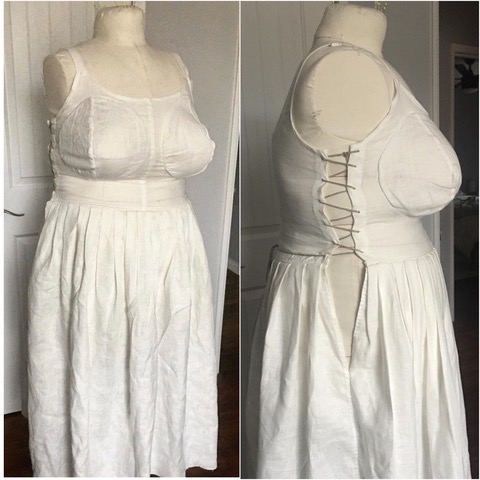
 Loading...
Loading...
Swiss Gollar
By THL Apel von Mülln
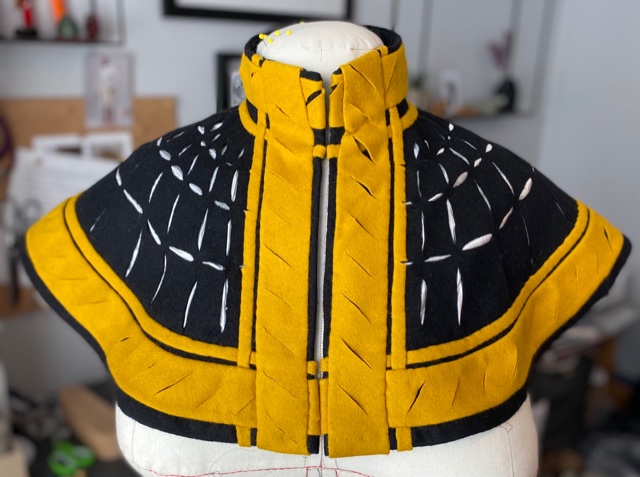
 Loading...
Loading...
Pleatwork
By THL Apel von Mülln

 Loading...
Loading...
A Recreation of a 15th Century English Knife
By Lady Dýrfinna Valsdóttir
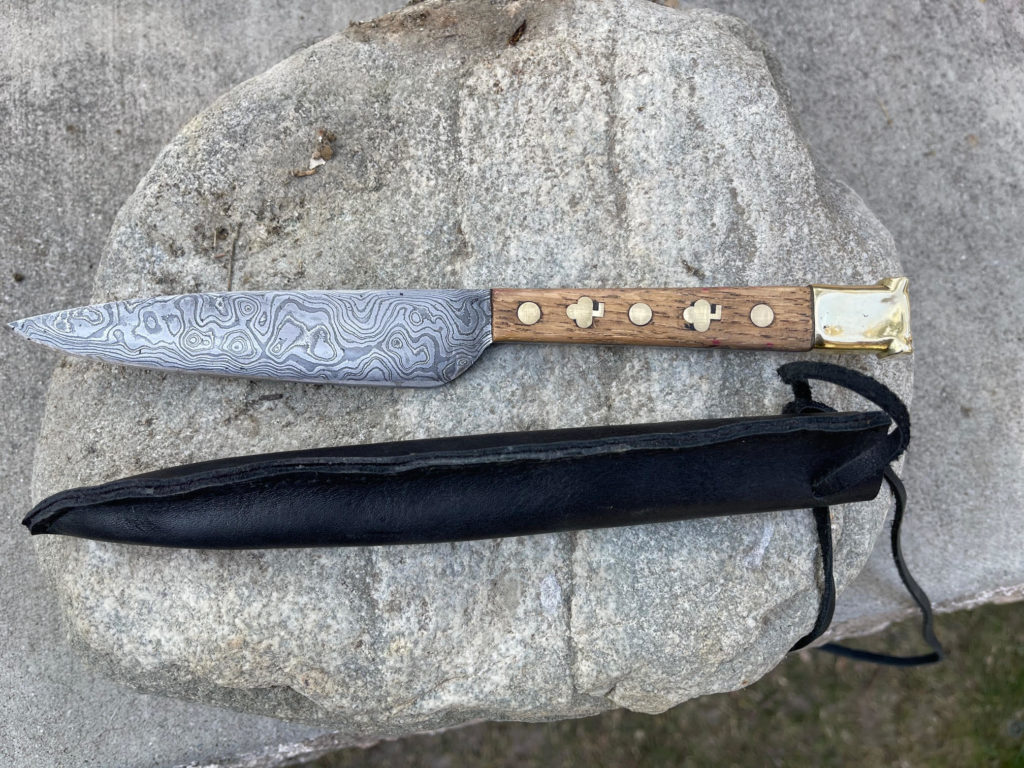
(Please Click on the Thumbnails Below for a Larger View)
 Loading...
Loading...
Creating a Viking Era Sea Chest
By Lady Dýrfinna Valsdóttir
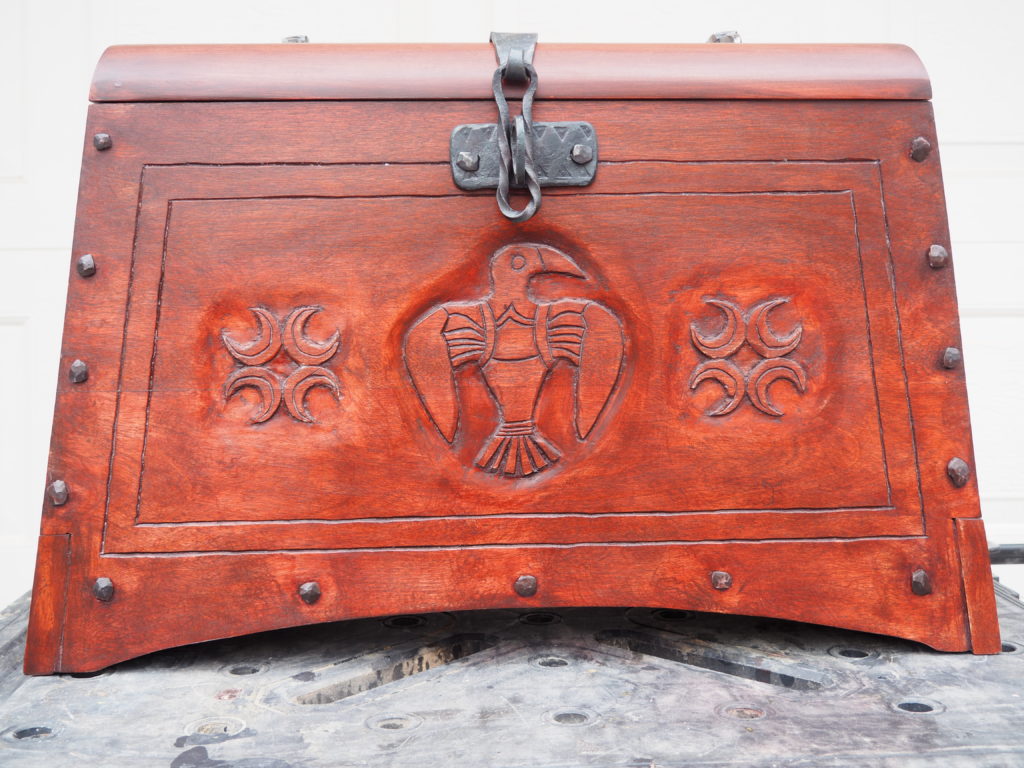
(Please Click on the Thumbnails Below for a Larger View)
 Loading...
Loading...
A Recreation of a 9th Century Viking Sword
By Lady Dýrfinna Valsdóttir
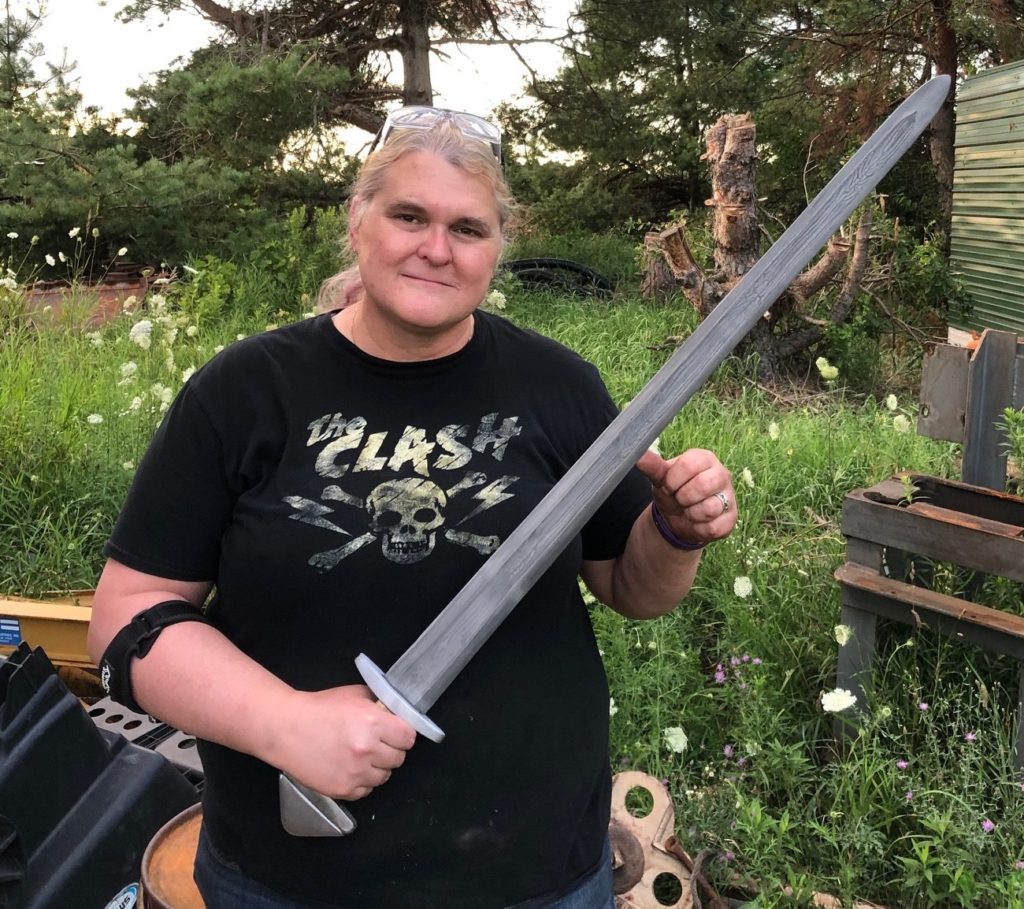
(Please Click on the Thumbnails Below for a Larger View)
